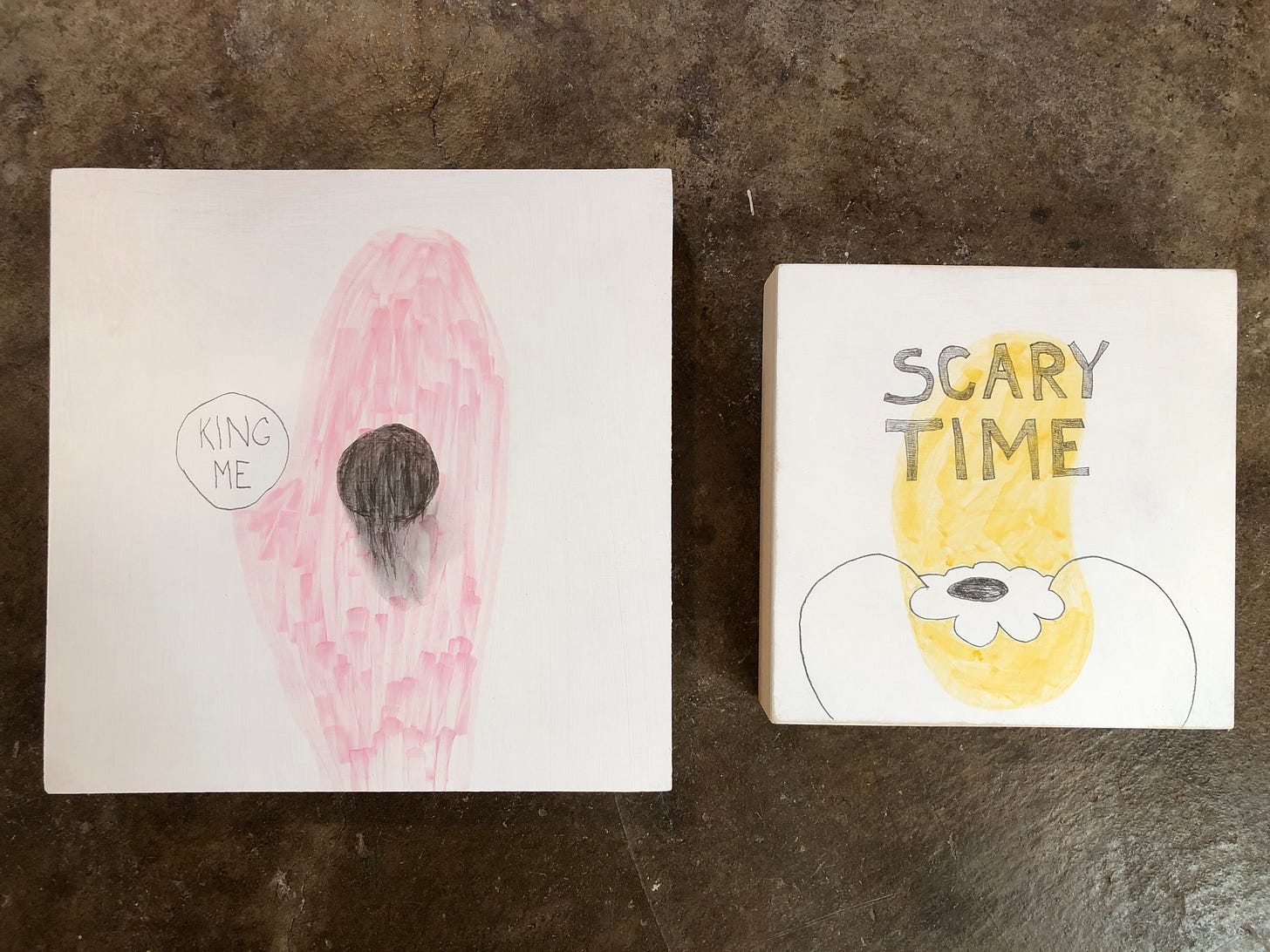Index of Personal Visual Effects: 0002 - Artifacts of Grammar: Words and Letters
Part 2 in a series about the imagery in my visual work. Basically it's me explaining myself to myself.

In my work you will frequently see broken letter forms, half-written sentences, or sentences that may sound like a common phrase or misspoken piece of pop culture. Like a new kid at school trying to say something cool to fit in and then blowing it, and everyone just looks at him.
Cue the crickets and sweaty hands.
Sometimes I just write down a phrase I hear or invent because I like the way the word combinations sound. It might sound like a sentence cut from a novel - important or descriptive, like its part of a bigger conversation that is now lost.
Sometimes there are drawn lines that look like words but are really just scribbles. This is kind of abstract “writing” is often referred to as asemic writing - or writing that has no specific semantic content, but still referring to a kind of sub-conscious communication. This is the key - the assertion of meaning, and an attempt to speak that somehow gets disrupted. Lost. Misunderstood.
Words are funny. Communication is hard. We are drowning in sales pitches, calls-to-action, roadside theological declarations, and being a poet is considered a shortcut to poverty (unless you put it over a beat and can dance to it). As a graphic designer for most of my career, I’ve always been hyper-cognisant of how communication operates. As a function of the market, graphic communication is tasked with helping convince you that your life will be better if you spend your money on some shiny new handcrafted, artisinal, locally-sourced, redesigned-from-the-ground-up widget. In this context words are shaped and decorated not to ask questions, but to convince you your life is missing something, and only the unicorn startup brand has the solution.

Growing up religious there were both unspoken, and quite spoken, rules around what you should and should not say, for fear of offending God or others. At the same time you were instilled an urge to be vocally opinionated about people’s destination in the afterlife, or the sinful nature of their current life. I engaged in apologetic debates over the meanings of words, or phrases in the bible. Debating original intention versus cultural application (often revealing a lack thereof) was standard issue.
There was also all of t-shirts, books, bumper stickers and political ideology wrapped in theology. Art and music were not tools of expression but messaging platforms. The accumulative affect was one of being conditioned to see language a tool for being right, or to establish universal certainy, or to convnice someone to part with either their wordly ways, or their money. Sometimes both. Again, less about asking questions, and more about reminding you your life is missing something.
Anyway, this post isn’t about religion or capitalism (is there even a difference?). It’s about how my interest in the edge between meaning and feeling gets blurred in my artwork. Playing with the failure and amusement of language is not that different than the broken architecture I talked about in a previous post. Letterforms and the juxtaposition of words reference failure by subverting constructs - the assumed rules and knowable points of reference that carry meaning.
Text is not language. Letters are only agreed upon signs that represent one aspect of communication. Spoken words without tone of voice and body language are only giving you half of the intended information. Colloquial statements may be a an element of a shared cultural, but also tied to place or time and not at all universal. Words and meaning can also be tied to a fixed point in time. Sometimes they moves with us. Sometimes we leave them behind and new meanings emerge.
Thanks for getting this far. If you like what I’m writing, and want to support it, consider the Tip Jar. If that doesn’t suit you, then please share the writing with someone who may dig what I talk about.






